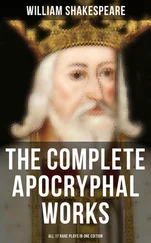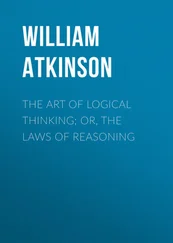Certain terms may be used as either Concrete Terms or as Abstract Terms, and certain authorities have seen fit to classify them as Mixed Terms , as for instance the terms: "government; religion; philosophy;" etc.
Another general classification of Terms divides them into two respective classes as follows: (1) Positive Terms ; and (2) Negative Terms .
A Positive Term is a term which denotes its own qualities, as for instance: "good, human, large, square, black, strong," etc. These terms indicate the presence of the quality denoted by the term itself.
A Negative Term is a term denoting the absence of a quality, as for instance: "inhuman, inorganic, unwell, unpleasant, non-conducive," etc. These terms deny the presence of certain qualities, rather than asserting the presence of an opposite quality. They are essentially negative in nature and in form. Jevons says: "We may usually know a Negative Term by its beginning with one of the little syllables un-, in-, a-, an-, non-, or by its ending with -less." Hyslop says: "The usual symbols of Negative Terms are in , un , less , dis , a , or an , anti , mis , and sometimes de , and non and not ." Jevons adds: "If the English language were a perfect one, every term ought to have a Negative Term exactly corresponding to it, so that all adjectives and nouns would be in pairs. Just as convenient has its negative inconvenient ; metallic, non-metallic; logical, illogical; and so on; so blue should have its negative, non-blue; literary, non-literary; paper, non-paper. But many of these Negative Terms would be seldom or never used, and if we happen to want them, we can make them for the occasion by putting not-, or non-, before the Positive Term. Accordingly, we find in the dictionary only those Negative Terms which are much employed."
The last named authority also says: "Sometimes the same word may seem to have two or even more distinct negatives. There is much difference between undressed and not-dressed , that is 'not in evening dress.' Both seem to be negatives of 'dressed,' but this is because the word has two distinct meanings."
Some authorities insist upon closer and further classification, as for instance, in the case of what they call a Privative Term , denoting the absence of qualities once possessed by the object, person or thing, as: "deaf, dead, blind, dark," etc. Hyslop says that these terms "are Positive in form and Negative in matter or meaning." Also in the case of what they call a Nego-positive Term , denoting "the presence of a positive quality expressed in a negative manner," as: disagreeable, inhuman, invaluable, etc. These last mentioned classes however are regarded by some as the result of "carrying too far" the tendency toward classification, and the two general classes, Positive and Negative, are thought sufficient for the purpose of the general student. The same objection applies to a classification occasionally made i.e. , that which is called an Infinitated Term , denoting a term the intent of which is to place in a distinct category every object, person or thing other than that expressed in the corresponding Positive Term. The intent of the term is to place the positive idea in one class, and all else into a separate one. Examples of this class of terms are found in: "not-I, not-animal, not-tree, unmoral," etc. Hyslop says of these terms: "They are not always, if ever, recognized as rhetorically elegant, but are valuable often to make clear the really negative, or infinitatively negative nature of the idea in mind."
Another general classification of Terms divides them into two respective classes, as follows: (1) Absolute Terms; and (2) Relative Terms.
An Absolute Term is a term denoting the presence of qualities intrinsic to the object, and not depending upon any relation to any other object, as for instance: "man; book; horse; gun;" etc. These terms may be related to many other terms, but are not necessarily related to any other.
A Relative Term is a term denoting certain necessary relations to other terms, as for instance: "father; son; mother; daughter; teacher; pupil; master; servant;" etc. Thus it is impossible to think of "child" except in relation to "parent," or vice versa . The one term implies the existence of its related term.
Hyslop says of the above classification: "Relative Terms suggest the thought of other individuals with the relation involved as a part of the term's meaning, while Absolute Terms suggest only the qualities in the subject without a relation to others being necessarily involved."
Some authorities also classify terms as higher and lower ; also as broad and narrow . This classification is meant to indicate the content and extent of the term. For instance, when we classify, we begin with the individuals which we then group into a small class. These classes we then group into a larger class, according to their resemblances. These larger classes then go to form a part of still larger classes, and so on. As these classes advance they form broader terms; and as we retreat from the general class into the less general and more particular, the term becomes narrower . By some, the broader term which includes the narrower is called the higher term , and the narrower are called the lower terms . Thus animal would be a higher and broader term than dog, cat or tiger because it includes the latter. Brooks says: "Since a concept is formed by the union of the common attributes of individuals, it thus embraces both attributes and individuals. The attributes of a concept constitute what is called its content ; the individuals it embraces constitute its extent ."
Accordingly, the feature of including objects in a concept or term is called its extension ; while the feature of including attributes or qualities is called its intension. It follows as a natural consequence that the greater the extension of a term, the less its intension ; the greater its intension , the less its extension . We will understand this more clearly when we consider that the more individuals contained in a term, the fewer common properties or qualities it can contain; and the more common properties, the fewer individuals. As Brooks says: "The concept man has more extension than poet , orator or statesman , since it embraces more individuals; and less intension , since we must lay aside the distinctive attributes of poet, orator and statesman in order to unite them in a common class man ." In the same way the general term animal is quite extended for it includes a large number of individual varieties of very different and varied characteristics and qualities; as for instance, the lion, camel, dog, oyster, elephant, snail, worm, snake, etc. Accordingly its intension must be small for it can include only the qualities common to all animals, which are very few indeed. The definition of the term shows how small is its intension , as: " Animal. An organic being, rising above a vegetable in various respects, especially in possessing sensibility, will and the power of voluntary motion." Another narrows the intension still further when he defines animal as: "a creature which possesses, or has possessed, life." Halleck says: " Animal is very narrow in intension, very broad in extension. There are few qualities common to all animals, but there is a vast number of animals. To give the full meaning of the term in extension , we should have to name every animal, from the microscopic infusoria to the tiger, from the angleworm to the whale. When we decrease the extension to one species of animal, horse , the individuals are fewer, the qualities more numerous."
Читать дальше












